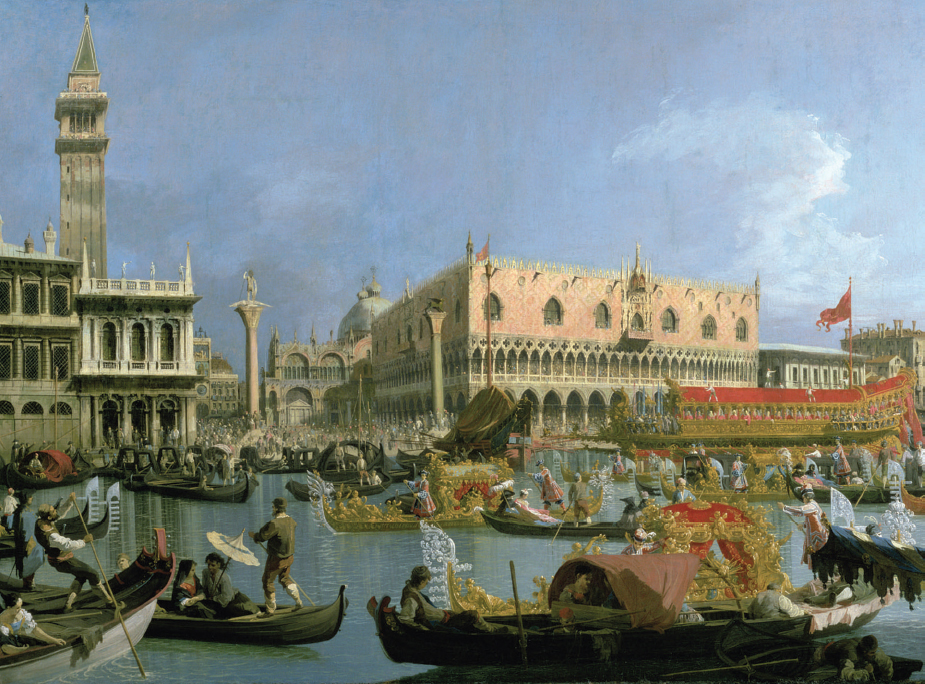Music in Venice
Meanwhile, there were important developments in Venice, the city of canals. The “Most Serene Republic,” as Venice called itself, cultivated especially brilliant styles in all the arts — matched, it seems, to the city’s dazzling physical beauty.
Wealthy and cosmopolitan, Venice produced architects whose flamboyant, varied buildings were built of multicolored materials, and painters — the Bellinis, Titian, Tintoretto — who specialized in warm, rich hues. Perhaps, then, it is more than a play on words to describe Venetian music as “colorful.”

From the time of Palestrina’s Pope Marcellus Mass (see page 70), composers of the sixteenth century had often divided their choirs into low and high groups of three or four voice parts each. These semichoirs would alternate and answer or echo each other. Expanding this technique, Venetian composers would now alternate two, three, or more whole choirs. Homophony crowded out counterpoint as full choirs answered one another in stereo, seeming to compete throughout entire motets and Masses, then joining together for climactic sections of glorious massed sound.
The sonic resources were enriched even further when Venetian composers started designating the choirs for instruments on some parts as well as the usual voices on others. Even whole choirs could be made up of instruments and pitted against the choirs of voices. As the sonorous combinations of Venetian music grew more and more colorful, magnificence and extravagance became the new ideals, well suited to the pomp and ceremony for which Venice was famous. And as Venice became the tourist center of Europe, its distinctive music proved to be one of its big attractions.